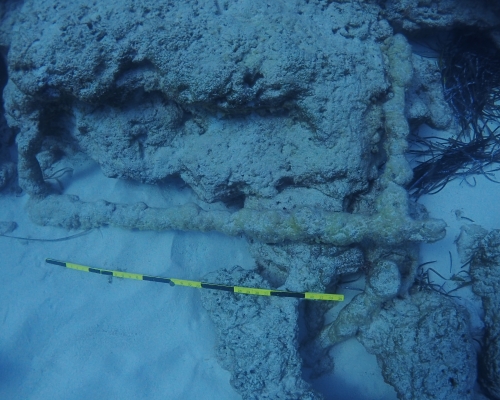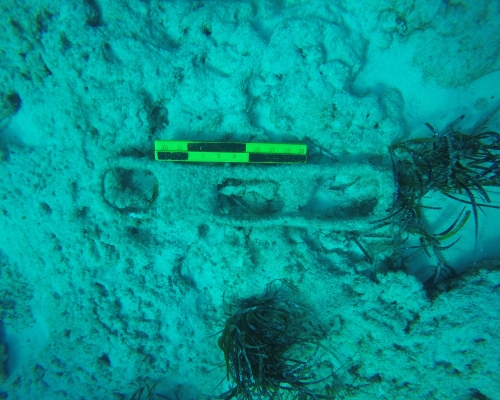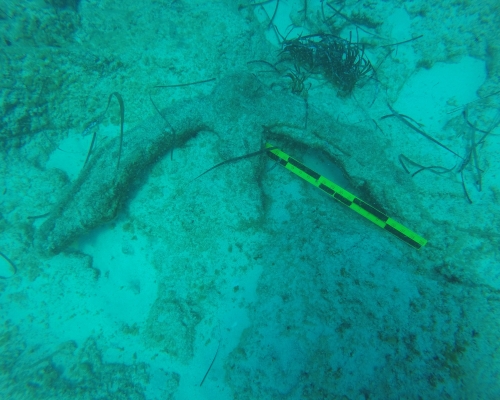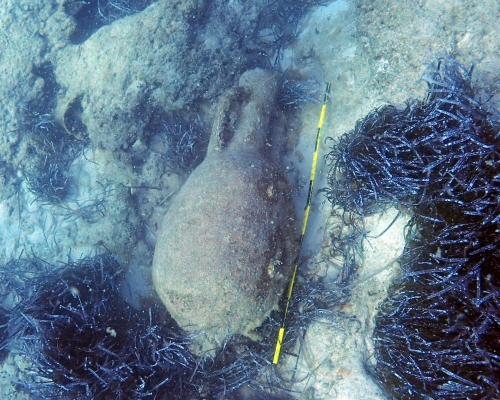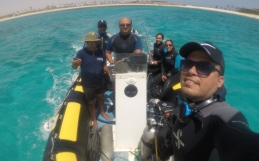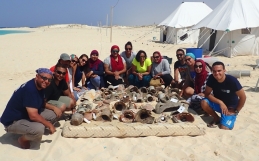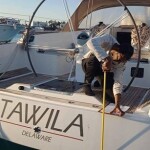During the 2018 season, the team shifted the focus of the survey further to the western side of the bay of Marsa Bagoush that is most protected and most suitable for anchoring, so it is expected that ancient maritime activities would have been more intense there and during this season, a general survey of Ladamantia was conducted, during which 43 dives were carried out at depths ranging from 3m to 16m.
The survey resulted in the following:
- The discovery of evidence for at least 12 anchors of different types and dates including lead stocks, lead collars, iron stocks and iron flukes. The date of these ranged from the Hellenistic Period to the 19th century. The site thus contains the largest collection of ancient anchors in any underwater site in Egypt outside Alexandria.
- In addition to the above, the site began to reveal, for the first time, intact amphora at depths between 12 meters to 16 meters. Eight different types of amphorae have been recorded from the Roman period originating from Egypt, Tunisia, Mauritania, Gaza, Rhodes, and Aegean. Moreover, many clusters of pottery sherds belonging to various types of amphorae were discovered, the most significant of which are Amphore Égyptienne 3 and Amphore Égyptienne 4, both of which were manufactured in Egypt and specifically in the Mareotic region from the 1st to the 3rd centuries AD. Hence, the ship that was carrying those amphorae probably left Alexandria on its way to one of the Mediterranean ports laden with Egyptian wine produced in the Mareotic region. The Amphore Égyptienne 3 is one of the most important types that was produced exclusively in Egypt from the 1st to the 4th century AD.
- Moreover, among the items that were discovered in the site for the first time are lead brail rings. Two have so far been identified, each of a diameter of about 7 cm. Also several iron nails and fragments of wood were discovered representing evidence for wooden sailing ships.
Planning these remains on a map indicated that they cover an area of 500m x 250m. It is likely that the area was the route of ships entering and leaving the harbour to avoid the shallow rocks to the north and west of the harbour entrance.
Related Posts

